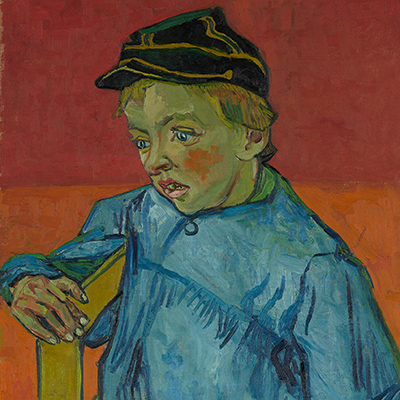
Van Gogh, The Schoolboy
Vincent van Gogh, The Schoolboy: Pigment analysis of this portrait of Camille Roulin, son of the Arles postman, Joseph Roulin.

Vincent van Gogh, The Schoolboy: Pigment analysis of this portrait of Camille Roulin, son of the Arles postman, Joseph Roulin.
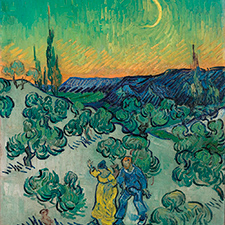
Van Gogh, Landscape with Couple Walking and Crescent Moon was painted in San Rémy in Provence during van Gogh’s stay in the mental hospital.
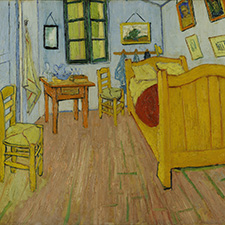
Van Gogh, Bedroom in Arles: the pigment analysis shows the use of chrome yellow, cobalt blue, and vermilion among other pigments.
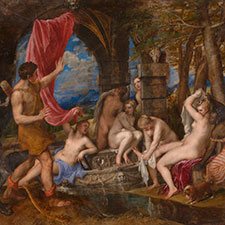
An extensive collection of information on the pigment analysis and other artistic and technical aspects of Titian, Diana and Actaeon.
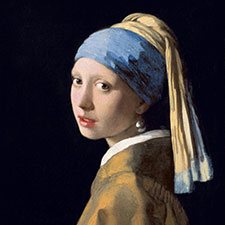
An extensive collection of information on the pigment analysis and other artistic and technical aspects of Vermeer, Girl with a Pearl Earring.
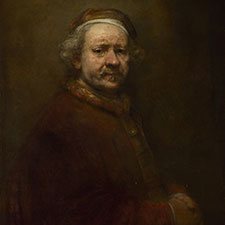
Rembrandt, Self-Portrait at the Age of 63 shows the painter in the last year of his life as an old man but still fully confident and self-assured.
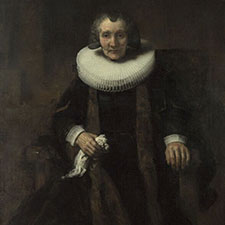
Rembrandt, Portrait of Margaretha de Geer is an example of Rembrandt’s popularity as a portrait painter in the last decade of his life.
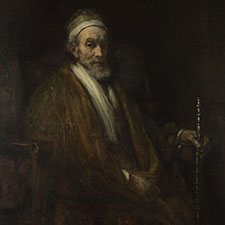
Rembrandt, Portrait of Jacob Trip and its companion portrait of his wife Margaretha de Geer are examples of Rembrandt’s popularity as a portrait painter in the last decade of his life. The family of the Dordrecht merchant Jacob Trip was one of the richest in Holland.
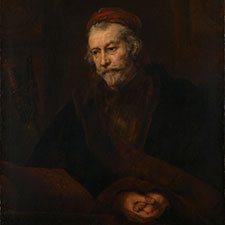
Rembrandt, ‘An Elderly Man as Saint Paul’ shows the apostle with a book and a sword as his attributes.
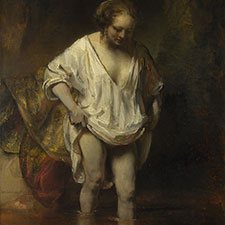
Rembrandt, A Woman bathing in a Stream is an exceptional work in its spontaneity and perfection. The model is most probably Hendrickje Stoffels.
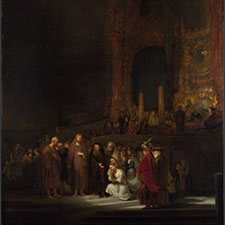
Rembrandt, The Woman taken in Adultery a masterful depiction of the well-known Bible story showing an exceptional handling of color.
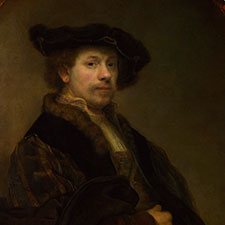
Rembrandt, ‘Self-Portrait at the Age of 34’ shows the artist at the height of his fame in rich and elegant clothing. The pose was inspired by Titian’s and Dürer’s portraits.
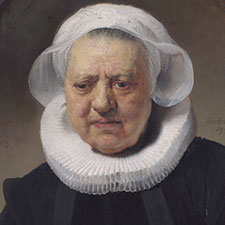
Rembrandt, Portrait of Aechje Claesdr. The masterfully executed black dress and white ruff complement the expressive countenance of the old woman.
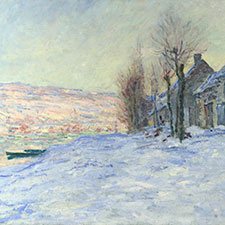
Claude Monet, ‘Lavacourt under snow’ is a mature work showing a refined and simplified technique compared to the older works.
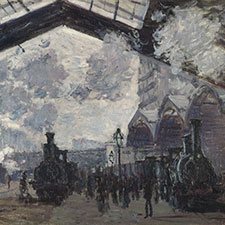
Monet, ‘The Gare Saint-Lazare’ is one of twelve paintings with the same subject. The rather special painting technique is described in the following text.
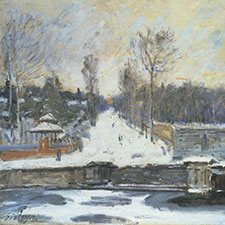
Sisley, The Watering Place at Marly-le-Roi: the pigment analysis revealed a limited palette of cobalt blue, red lake, viridian red ochre and chrome yellow.
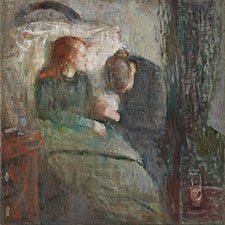
The Sick Child is one of Munch’s early works. The pigment analysis reveals an exceedingly rich palette and elaborate handling of colour.
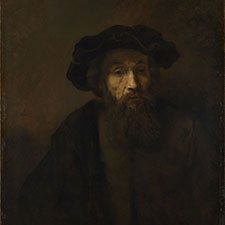
The pigment analysis of this character study (tronie) reveals a palette consisting of ochres, bone black, red lake and vermilion.
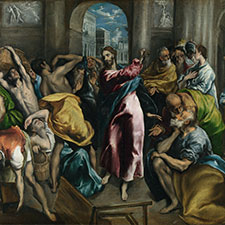
El Greco, Christ driving the Traders from the Temple: The scene is unusual in that it is the only occurrence where Christ resorted to physical violence.
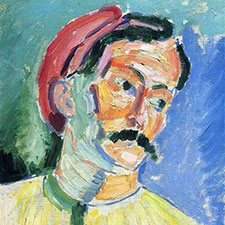
Matisse, Portrait of André Derain is a mature work showing intricate colour relationships between the figure and the background.
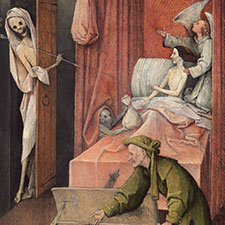
An extensive collection of information on the pigment analysis and other artistic and technical aspects of Hieronymus Bosch, The Death and the Miser.
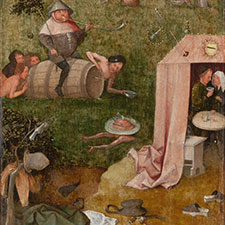
‘Gluttony and Lust’ is another one of Bosch’s paintings depicting the sinful ways of Man. It was originally the lower section of ‘The Ship of Fools’.
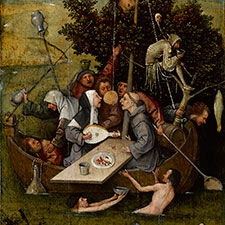
Bosch’s ‘The Ship of Fools’ shows a boatload of merrymakers indulging in earthly pleasures and unwittingly sailing towards their doom.
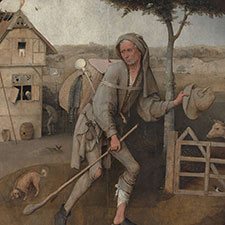
‘The Wayfarer’ was part of a triptych which was later dismantled. The interpretation of the painting is subject to intense discussion.
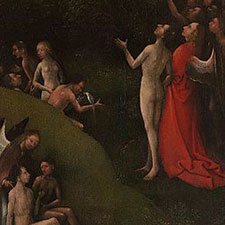
‘Visions of the Hereafter’ polyptych consists of two panels depicting scenes from Hell and two panels showing scenes from Paradise. The original arrangement and purpose of the panels are not known.
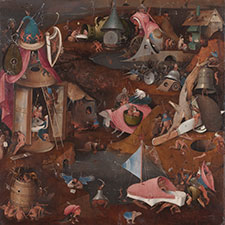
An extensive collection of information on the pigment analysis and other artistic and technical aspects of Hieronymus Bosch, The Last Judgement.
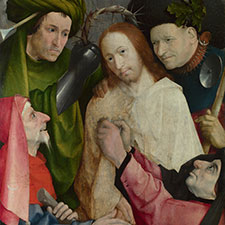
‘The Crowning with Thorns’ is a depiction of another biblical scene (John 19:1-3) with the tormentors of Christ painted in close detail which was rather unusual in Bosch’s time.
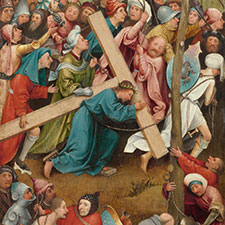
An extensive collection of information on the pigment analysis and other artistic and technical aspects of Hieronymus Bosch, Christ Carrying the Cross.
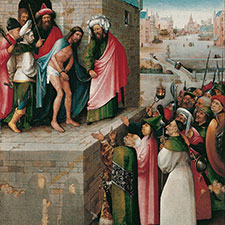
An extensive collection of information on the pigment analysis and other artistic and technical aspects of Hieronymus Bosch, Ecce Homo.
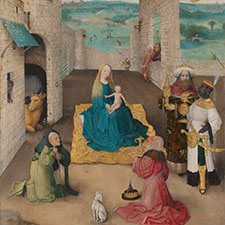
An extensive collection of information on the pigment analysis and other artistic and technical aspects of Hieronymus Bosch, The Adoration of the Magi.
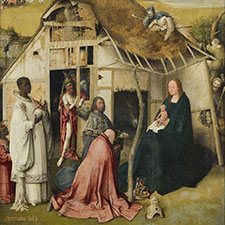
An extensive collection of information on the pigment analysis and other artistic and technical aspects of Hieronymus Bosch, The Adoration of the Magi.

Pigment analysis and other pertinent information on Hieronymus Bosch, Saint Wilgefortis Triptych: a depiction of the crucifixion of a female Saint.
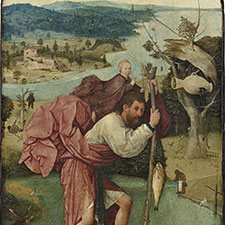
An extensive collection of information on the pigment analysis and other artistic and technical aspects of Hieronymus Bosch, Saint Christopher.
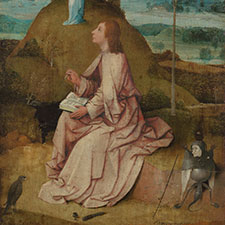
An extensive collection of information on the pigment analysis and other artistic and technical aspects of Hieronymus Bosch, Saint John on Patmos.
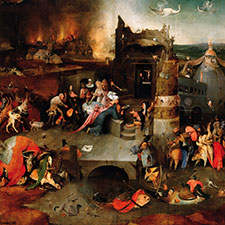
One of Bosch’s most important work with unusually complex genesis and dramatic changes to the composition.
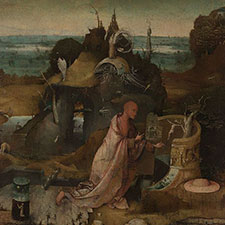
The triptych shows three saints living in solitude and prayer. The pigment analysis revealed a limited palette of the usual pigments of the Renaissance period.
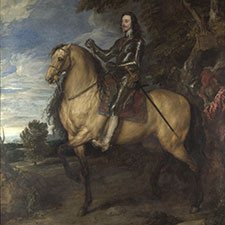
One of the largest paintings in the National Gallery London. The pigment analysis shows how Van Dyck achieved the subdued tonality and subtle colours.
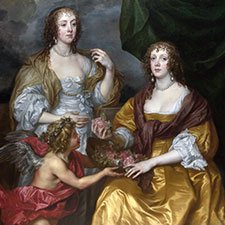
This double portrait of two sisters, daughters of Thomas, Viscount Savage was painted in England. The interactive pigment analysis allows deeper insight into Van Dyck’s working methods and his masterful depiction of the draperies and flesh tones.
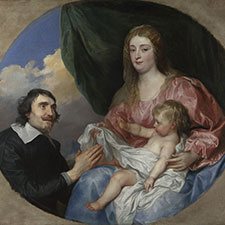
The pigment analysis reveals a palette of rather vivid colours. Van Dyck employed the usual pigments of his time, such as ultramarine, red lake, lead-tin yellow, vermilion and indigo.
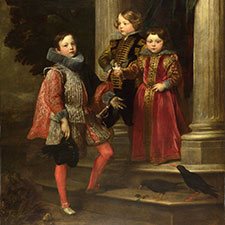
The pigment analysis and the investigation of the painting reveal a very elaborate glazing technique which Van Dyck had not used in his later work.
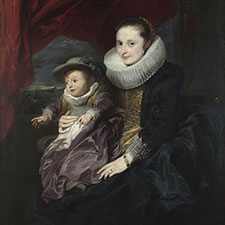
The pigment analysis reveals a masterful depiction of the draperies and dresses.
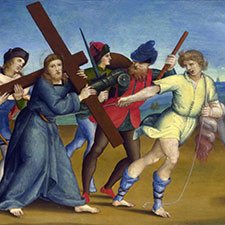
Illustrated pigment analysis gives a thorough insight into Raphael’s technique, his choice of materials and his handling of colour.
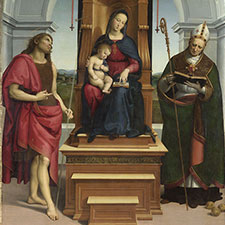
The pigment analysis shows a rich palette of Renaissance pigments including ultramarine, verdigris and the very rare powdered metallic bismuth.
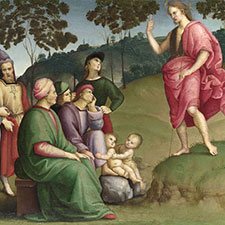
Pigment analysis reveals typical pigments employed by Raphael such as ultramarine, lead-tin yellow, azurite and verdigris.
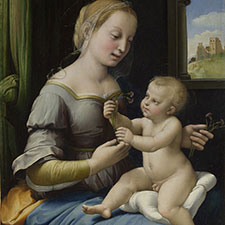
Pigment analysis shows Raphael’s use of two very rare pigments: metallic gold and metallic bismuth.
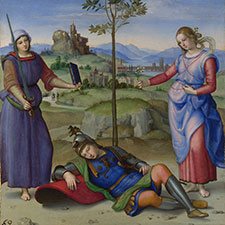
An exhaustive pigment analysis reveals a rich palette of the usual Renaissance pigments but also includes the rare orpiment.
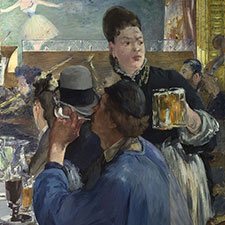
Manet, Corner of a Café-Concert: A thorough analysis brought to light that this painting was originally part of a bigger composition which was later cut by Manet himself into two parts.
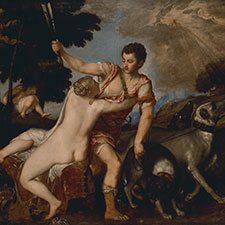
Titian, Venus and Adonis: Exhaustive and illustrated pigment analysis of Titian’s masterpiece depicting a Greek myth.
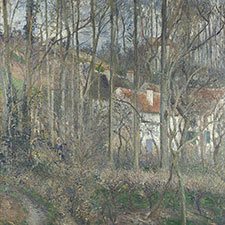
Pissarro, The Côte des Boeufs at L’Hermitage: the pigment analysis shows an intricate use of colour with subdued tonalities and few strong accents.
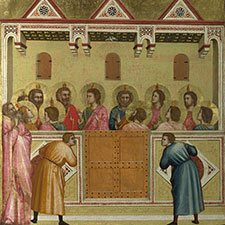
The investigation of Giotto’s Pentecost revealed an unusual method of gilding and also the probable use of the very rare red pigment dragon’s blod.